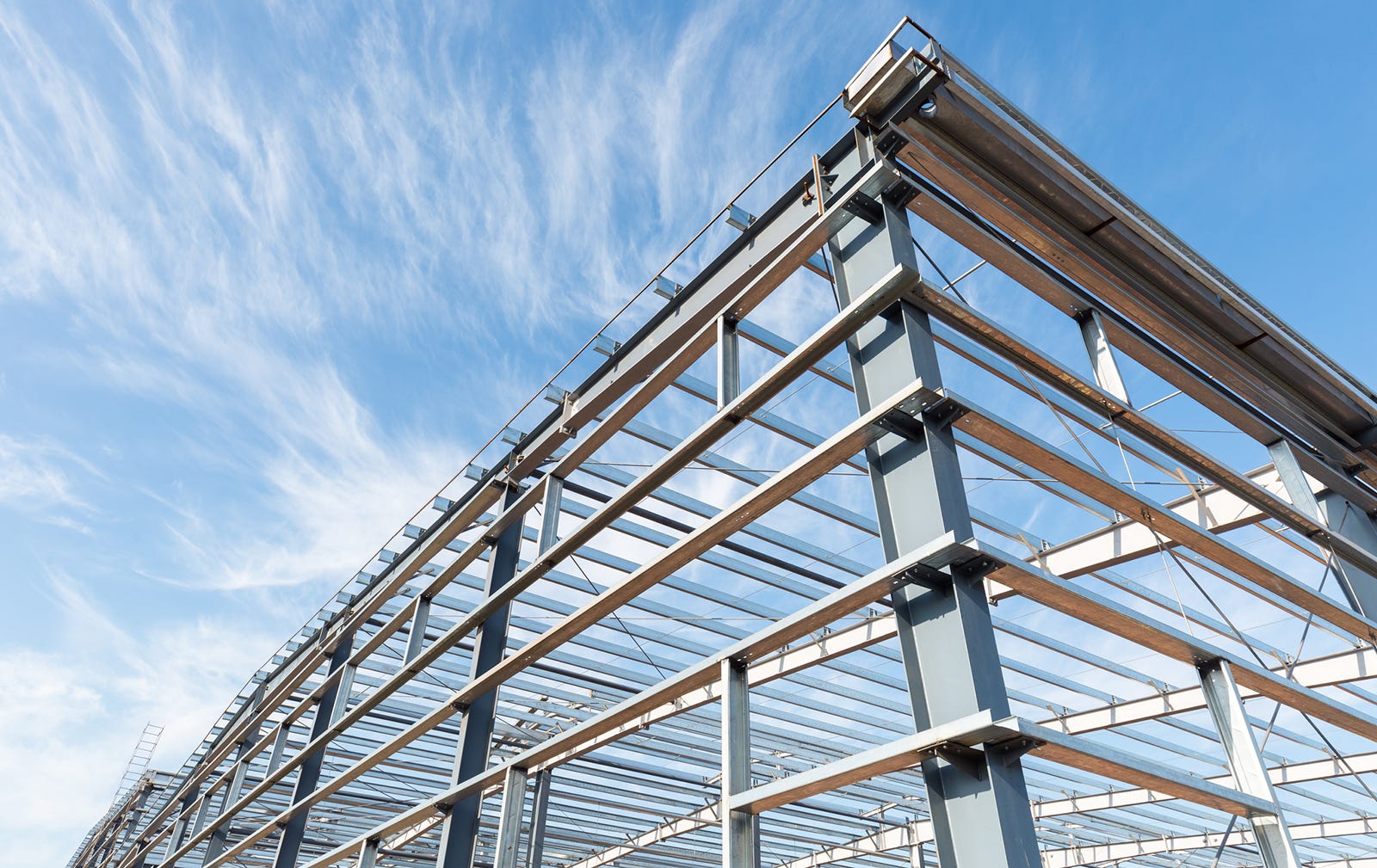Advanced coatings enhance modular construction for EV battery plants
Modular construction is transforming EV battery plant development. Advanced coatings protect steel during transport and operation, improving fire safety and energy efficiency.
Published 13 May 2025

Electric vehicle (EV) battery production continues to boom. To meet demand, manufacturers are rethinking how to build these high-tech facilities are designed and built. Modular construction emerges as a leading approach, offering faster timelines, better cost predictability and reduced environmental impact. However, modular construction introduces its own challenges, especially in protecting steel structures during transport, installation and long-term operation. Advanced protective coatings can address these issues and still enhance corrosion resistance, fire protection, and energy efficiency compared to traditional coatings.
Why modular construction?
The expansion of battery manufacturing in North America has transformed the region into a key player in the global EV supply chain. What started as a slow shift during the COVID-19 pandemic has accelerated into a major industrial movement, with more than 30 battery factories now planned, under construction or operational in the U.S. alone, according to media reports.
While government policies like the Inflation Reduction Act initially fueled investment, private sector momentum has kept growth on track despite political shifts. Automakers and battery manufacturers have committed more than $100 billion to domestic production to meet the increasing demand for EVs. Thus, owners and developers turn to modular construction to build these facilities efficiently. Why? Because it delivers on key priorities:
Keep tight construction schedules: Offsite fabrication allows simultaneous jobsite construction and module production
Cost predictability: Controlled environments reduce unexpected delays
Sustainability benefits: Optimized logistics and prefabrication help reduce emissions and material waste
Protect Steel
Modular EV battery plants require advanced coatings to help steel structures withstand transport stress, fire hazards and long-term exposure to demanding conditions. Consider this case study. A leading German biotechnology company partnered with one of Portugal’s largest steel fabricators to construct a new manufacturing facility in Kigali, Rwanda. The project required 90-minute passive fire protection and a durable coating system capable of withstanding long-distance transport and exposure to challenging environments. The team selected PPG Steelguard 951, an epoxy intumescent coating rated for both C3 and C5 (corrosivity categories defined by ISO) environments, for its high performance and application efficiency.

Applied off-site to more than 60,000 kg of structural steel, the coating enabled controlled application conditions to reduce onsite labor and any rework. The precoated steel was transported without damage, supporting a fast-track build completed in four months. The project illustrates how advanced protective coatings can enhance fire protection, structural resilience and construction speed—while contributing to sustainability through resource efficiency and waste reduction. (Using shipped precoated assets can help reduce logistical expenses and environmental impact, potentially leading to reduced costs and emissions).
This case shows the potential for advanced coatings to deliver fire safety, structural resilience and sustainability, which are all critical to EV battery facilities, where steel faces similar exposure and stress.
Energy savings
Beyond structural protection, coatings can also play a crucial role in optimizing energy efficiency. Consider the traditional field-applied insulation methods often involving complex and time-consuming processes such as scaffolding and cladding. Advanced spray-on insulation (SOI) coatings can be pre-applied in the factory before transport for:
More consistent insulation performance across all modular components.
Elimination of field-application challenges for reduced project delays.
Improved thermal control, preventing inefficiencies caused by insulation gaps.
Unlike conventional insulation, these advanced SOI coatings provide uniform thermal resistance, effectively reducing heat transfer and improving energy efficiency. They also help prevent moisture-related corrosion. Corrosion under insulation (CUI) remains a common issue in industrial facilities. Also, safe-to-touch surfaces enhance personnel protection in areas with high-temperature equipment. Having steel structures insulated offsite, owners and contractors can:
Improve thermal efficiency when compared with traditional insulation methods.
Extend structure life cycle quality since coatings are applied in controlled environments.
Lower installation costs because insulation does not require extensive onsite labor.
By integrating high-performance thermal coatings, EV battery manufacturers can build energy-efficient facilities that support sustainable, cost-effective operations while maintaining the highest durability and performance standards.
Drive into the future
Developers will need to integrate advanced coating solutions early in the planning process to take full advantage of the benefits of modular construction. Digital tools such as PPG’s EV Battery Digital Experience can provide insights that help professionals select the right coatings to minimize rework and ensure regulatory compliance at every project stage. These tools can help teams make smarter, more cost-effective decisions by offering a coating system that matches project needs. That’s why it is important to partner with a coatings supplier who understands the pain points of modular construction of EV battery facilities and how best to move forward for a successful outcome.
Note: PPG will exhibit at The Battery Show North America 2025 in Detroit, October 6 - 9.
Bruno Bruxelas is a PPG Key Account Manager for EV, Battery, Recycling Plants for Protective and Marine Coatings. With extensive experience in corrosion protection, fireproofing and high-performance coatings, he helps manufacturers and developers optimize their facilities for long-term durability and efficiency.
Originally published in Battery Technology.
